Guest post by Caroline Starr Rose
It’s an age-old question: how does one move from a chapter, a scene, an idea for a character to an entire book? For the poet the query is largely the same. She might have no issues in evoking the emotion necessary for one poem but is unsure how to sustain the structure or intensity for an entire verse novel.
The more I write, the more I firmly believe there is no one way to write a book. I have yet to approach any of my manuscripts the same way. Here, though, are some things I’ve learned from both reading and writing verse novels:
- Subject matter must be right for poetry
Some topics lend themselves more easily to poetry than others. Some subjects refuse to be written as prose. Many times an author will use verse to mimic the rhythm of the story. Here are a few books that come to mind: Sharon Creech’s HEARTBEAT, about a girl who loves to run
Sharon Creech’s HEARTBEAT, about a girl who loves to run 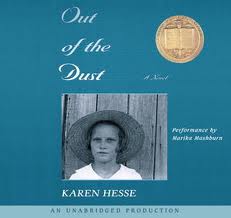 Karen Hesse’s OUT OF THE DUST, where the spare language reflects the stark Dust Bowl setting
Karen Hesse’s OUT OF THE DUST, where the spare language reflects the stark Dust Bowl setting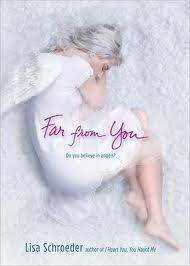 Lisa Schroeder’s FAR FROM YOU, about a girl who sings and and writes songs
Lisa Schroeder’s FAR FROM YOU, about a girl who sings and and writes songs
- Protagonists must be right for poetry
Often (though not always) verse novels are told from a very close first-person point of view. Such writing calls for a lot of introspection on the protagonist’s part. Other times verse is used as a way for multiple voices to be heard, almost like a Greek chorus. Here are some examples: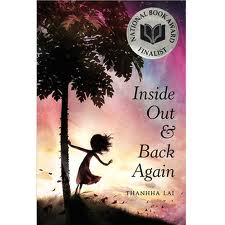 Thanhha Lai’s INSIDE OUT AND BACK AGAIN, about a Vietnamese girl’s efforts to understand her new American home
Thanhha Lai’s INSIDE OUT AND BACK AGAIN, about a Vietnamese girl’s efforts to understand her new American home Karen Hesse’s WITNESS, where the Ku Klux Klan moves into a quiet Vermont town, and citizens reflect on the change they bring
Karen Hesse’s WITNESS, where the Ku Klux Klan moves into a quiet Vermont town, and citizens reflect on the change they bring
- Poems should be able stand alone
Each poem in a verse novel must capture one moment, scene, idea, mark of change in your character’s life. Poems should also be able to function separately from the rest of the story. - Poems must contribute to the whole
When I worked through my own verse novel, MAY B., I kept a quilt in mind, treating each poem like its own square of fabric. Each patch had to be able to function separately while at the same time move the story forward. I trusted that if certain patterns and shades in my story quilt were repeated (think themes or story strands), eventually the interconnectedness would surface — a much more organic approach than is normally taken with prose. - Varied poem lengths
Some scenes flow, some end abruptly. Some thoughts wander, some jab. Without the structure of chapters, verse novels are simultaneously abrupt and fluid — poem lengths can be jagged yet aide the plot in moving through scenes swiftly. It is often difficult to find a place to stop reading, as one poem often bleeds into the next. - Varied line lengths
Verse novelists play with key phrases or words they want to bring to their reader’s attention by the way they arrange words on the page. Line breaks can be used to slow down reading, to draw the eye to important phrases, and to best “speak” the poem. - Emotion and structure
The structure of a poem often communicates to readers a character’s emotional state.
How might fear look structurally? A verse novelist might use little punctuation or words tightly packed together. Maybe the language of the poem will unfold in short bursts, reminiscent of a child peeking into a darkened room and quickly slamming the door. - Poetic form
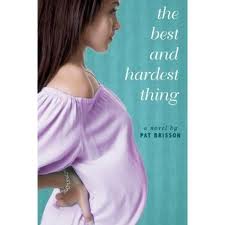 Some verse novelists use specific types of poetry (sonnets, for example), as Pat Brisson did with her book, THE BEST AND HARDEST THING.
Some verse novelists use specific types of poetry (sonnets, for example), as Pat Brisson did with her book, THE BEST AND HARDEST THING.
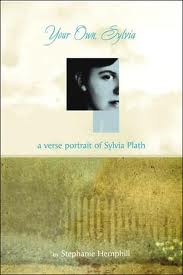 In writing about Sylvia Plath in YOUR OWN, SLYVIA, author Stephanie Hemphill chose to mirror the format of several of Plath’s poems, giving her readers a sense of the poet’s style, subject matter, intensity, and character.
In writing about Sylvia Plath in YOUR OWN, SLYVIA, author Stephanie Hemphill chose to mirror the format of several of Plath’s poems, giving her readers a sense of the poet’s style, subject matter, intensity, and character.
- The visual and the aural
When I was a teacher, I used to tell my students that poetry should be seen and heard. There is something special that happens when a reader experiences seeing, hearing, and saying a poem all at once — the fullness of the poem is discovered this way. If you ever feel stuck with a verse novel, find a private corner and try reading it aloud.
Verse novels aren’t books with strange line breaks. They are stories best communicated through the language, rhythm, imagery and structure of poetry. I hope you’ve found something here that sparks your imagination and helps you move from individual poems to a complete novel in verse.
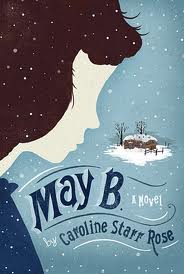 Caroline Starr Rose spent her childhood in the deserts of Saudi Arabia and New Mexico, camping at the Red Sea in one and eating red chile in the other. As a girl she danced ballet, raced through books, composed poetry on an ancient typewriter, and put on magic shows in a homemade cape. She’s taught both social studies and English in New Mexico, Florida, Virginia, and Louisiana. In her classroom she worked to instill in her students a passion for books, the freedom to experiment with words, and a curiosity about the past.
Caroline Starr Rose spent her childhood in the deserts of Saudi Arabia and New Mexico, camping at the Red Sea in one and eating red chile in the other. As a girl she danced ballet, raced through books, composed poetry on an ancient typewriter, and put on magic shows in a homemade cape. She’s taught both social studies and English in New Mexico, Florida, Virginia, and Louisiana. In her classroom she worked to instill in her students a passion for books, the freedom to experiment with words, and a curiosity about the past.
Caroline is the author of MAY B., a historical verse novel (2012, Schwartz and Wade), and the picture book OVER IN THE WETLANDS (2014, Schwartz and Wade).
Wonderful post, Caroline! I love how you wrote MAY B. as if you were making a quilt of poems. That’s a beautiful way to look at it. And of course, from your book list, I found some more titles I’m dying to read.
Dear Darcy Pattison,
I received your Prairie Storms today (May 24) and read the book right away. It is well written and has lots of information about how different animals react to stormy weather. The educational supplement in the back gives children more details about weather patterns. Prairie Storms’ illustrations depict the animals in action and in retreat from storms. The front cover has two deer, a lizard, a cougar, and a woodchuck looking out at the reader as a lightning bolt flashes in the sky. This design invites a child to open this book to explore the world of these animals.
Thank you for autographing this great book for me!
I also enjoyed today’s posting about writing novels in verse. I have published the award-winning fiction picture book for kids, How the Moon Regained Her Shape (Sylvan Dell, 2006). I have also published two books of poetry, Folk Concert (Anaphora Literary Press, 2012) and Traffic Stop (Finishing Line Press, 2011); however, I have never tried to write fiction in verse format.
Best wishes!
Janet Heller in Portage
Thanks so much for the great, pragmatic advice. A handy checklist before taking the plunge :)
What a wonderful guide Caroline, thank you! I am writing my second verse novel (first is with agent, waiting patiently to snatched up and loved), and I really appreciated your words. I will be buying May B today :)